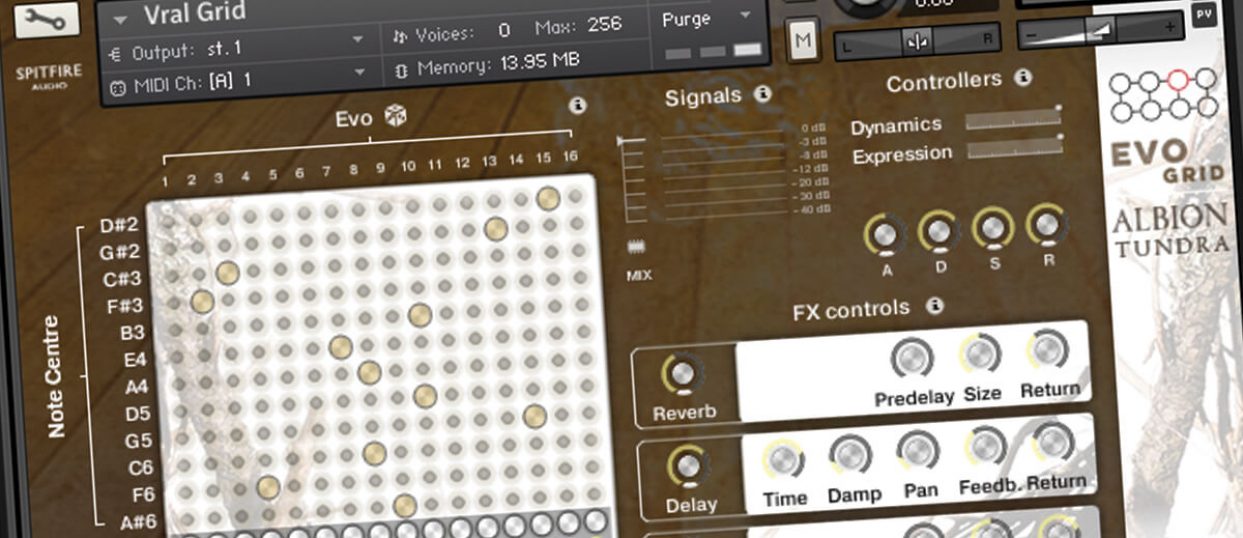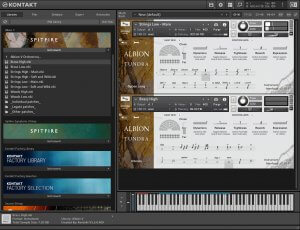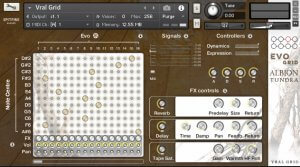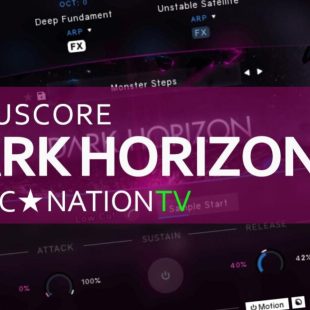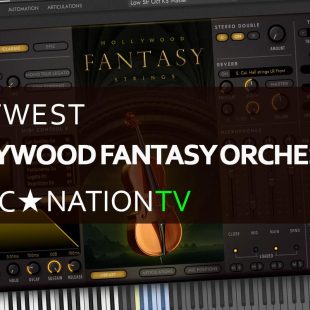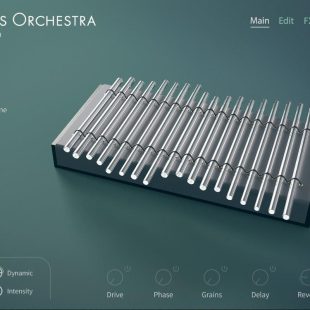Spitfire Audio Albion V
Spitfire Audio’s latest offering features a huge array of sampled instruments designed around being as quiet as possible. The icy tundra is indeed the mental image that goes through your mind as you play through some of the presets.
Albion V Tundra separates itself from the other titles in the ‘Albion’ line. You’ll not find huge walls of sound, blockbuster action sequences or blaring horn sections. Albion V is about the still, quiet air that hangs between notes. Branded as ‘At the edge of silence’, the marketing folk have really nailed that catchphrase this time.
Not that you’re getting a slimmed-down product, and in fact the opposite. The core orchestral set includes a 100-piece orchestra with a full complement of brass and woodwinds, all wonderfully recorded at Air Studios in London. Theres individual instrument patches, plus legato, longs and shorts.
The main difference is the dynamic range is pulled right back to the bare minimum, often with patches taking 15-20 seconds to develop. It’s airily strange, somewhat unsettling at times. The mod wheel controls this dynamic level and is adjustable from medium quiet (mp) level down to almost silence. There are 133 multi-dynamic articulations throughout the brass, woodwind and string sections meaning you also have incredible control over the dynamic output of the orchestra elements. With Albion V less really is more. You need to stay in the quieter zone to really hear the full potential of the samples, the way they develop over time and interact with other layered sounds.
Albion comes bundled with 5 main sections, the full Albion V Orchestra (strings, brass and woodwinds) mentioned above, Brunel Loops, Vral Grid Evo, Darwin Percussion and Stephenson’s Steam Band. The orchestral presets are the main focus and probably where you’ll start experimenting, but the others bring incredible flexibility if layered with one another. Creating fabulous landscapes is easy and the results are usually jaw-dropping.
Let’s have a look through each of the included sections.
In the orchestral section, you have three main sub-sections, each divided up into variations of soft, low and high. The string section has 38 violins, 12 celli and 6 basses with 63 articulations between them. These are mostly obscure Latin phrases (please, excuse my very minimal musical theory knowledge) – such as sul pont, flautando, tratto and super tasto, as well as a few creative variants like frozen, gipsy and double stops. The woodwind and brass sections offer up even more interesting articulations for the untrained, such as doodle tonguing, aleatoric overblowing and multiphonics (!?). I’ll leave all those names for you to consider. Sonically they all have interesting differences, usually with very convincing tail releases and the odd little quirk or mannerism in the recordings, like bow scratches and creaking wood. Of course, you have good control over the mic positions, Albion V offers Close, Tree, Outrigger and Ambient mics to mix between – and of course the studio sounds amazing, no thanks to the million-dollar Neve 88R console everything has been recorded through.
The Brunel Loops section features the unusual eDNA synth interface and is mostly looping weirdness. The interesting Farteous Maximus patch shows the Spitfire lads have a decent sense of humour. As a stand-alone instrument, the 22 individual loops don’t do much for me, there are on the whole very muted and one-dimensional. However when layered sensibly with any of the other main sections they are pure magic and introduce rhythmic pulses and breathing, all very cool stuff.
Darwin Percussion is a single instrument consisting of only 20 key groups. The drum is very muted and while nice enough sounding, doesn’t really cut through the mix well when layered. This section feels like an afterthought and could have largely been dropped.
But then we get the amazing Stephensons Steam Band section, a pad-type instrument which again uses the eDNA synth GUI. The sub-sections offer Bellow Pads, Jarv Pads, Sammal Presets and Dev Kits. I’ll be honest again, I don’t know what those things are, but they sound spectacular. Very un-earthy, ghostly and haunting. In solo mode they’re great, but layered up again and wow, used subtly under an orchestral patch and the pads add width and depth to your sounds. Amazing stuff.
And finally the really oddball section, the Vral Grid. If you have tried Spitfires Evo Grid instruments before you’ll know all about this. If not, just imagine 32 very long, droning samples that you trigger, randomly usually, with pegs in a virtual ‘grid’ wall. It’s totally bonkers and the sound is everything from perfection through to crazy weird. You mostly have no idea what you’re going to get, though with time you get a feel for what you might expect, but really – its down to so many factors affecting the grid, you might as well hit the cool random dice button every time and just roll with it. Yet again, this marries up perfectly with the other sections when layered.
Other than the eDNA instruments, Spitfire is keeping with the usual minimalistic GUI for Albion V, so there are no surprises for current users. The Evo and eDNA interfaces might throw new users, as in particular the eDNA is somewhat tricky to navigate and will take some to get to grips with. Of course, all 5 sections are intended to be used together as layers, so it’s a little odd they are all so totally different from each other in structure, requiring more than a little time to learn.
Road Test
My approach has been to focus on the orchestral section as the main workspace, using each of the remaining sections as embellishments when needed. You could equally choose any one of the sections to focus on and completely change the dynamics. I use Albion as an orchestral instrument with percussive elements, but why not choose a pad instrument with string highlights? Or a percussion instrument with Evo Grid tails.
Layering a randomised Evo Grid work incredibly well with the orchestral sections, a off-world weirdness and slightly detuned nature really bring unease to the patch. The Steam Band section is usually too out-there and requires reigning in output levels to preserve the balance and serenity of the patch.
The overall sound quality with all of the sections is beyond reproach, as usual with any Spitfire product. Every sound, even the out-there crazy one, usually fits well and gels nicely with each other. There is no phasing issues or tail-looping artefacts, just well-designed and high-quality recordings.
Even though there is an incredible selection of instruments here, I ache for some vocal elements. Everything leads itself towards ghostly voices, boys choral or even Gregorian chants would be excellent.
Fortunately, Spitfire has their installation really sorted. This is a massive 60gig download, but the Audio Library Manager is brilliant and chugs away in the background downloading all your content and setting up everything but the authorisation.
Conclusions
Albion V Tundra is the most amazing sound you will hardly hear! Truthfully, this collection sounds its best when played at minimal velocity. Spitfire says it’s the quietest recordings they have ever dared to try, apparently opening up the Air Studio to capture every reflection, with the amazing Neve 88R console and vintage mics picking up every nuance of sound. You will be transfixed playing this library in a quiet, well-monitored studio with the lights down.
If you are in the market for a product like Albion, you’ve done your research and are looking for supporting opinions on the product, of course, you should go ahead. Considerations should not be put on the quality or value for money with Albion, but more if this is the right library for your needs. At $449 USD this is a serious investment, but there’s nothing else.
Hauntingly beautiful, rich and complex, Albion V Tundra is one of the best on offer by Spitfire right now. There are many other titles in the Spitfire catalogue that offer vast arrays of broader and more diverse sounds, Albion V Tundra is in a very focused niche of its own, but within its scope, anything is possible.
Test Machine Specs
Core i5-6500 3.20 Ghz 16gig RAM. The library is installed on a secondary 7200 drive.
Windows 10, 64bit.
Focusrite Scarlett 214 Interface
Yamaha MOTIF and Roland Jupiter 80 controllers
Presonus Eris E44
Aventone Mixcubes
Shure SRH940 monitors

